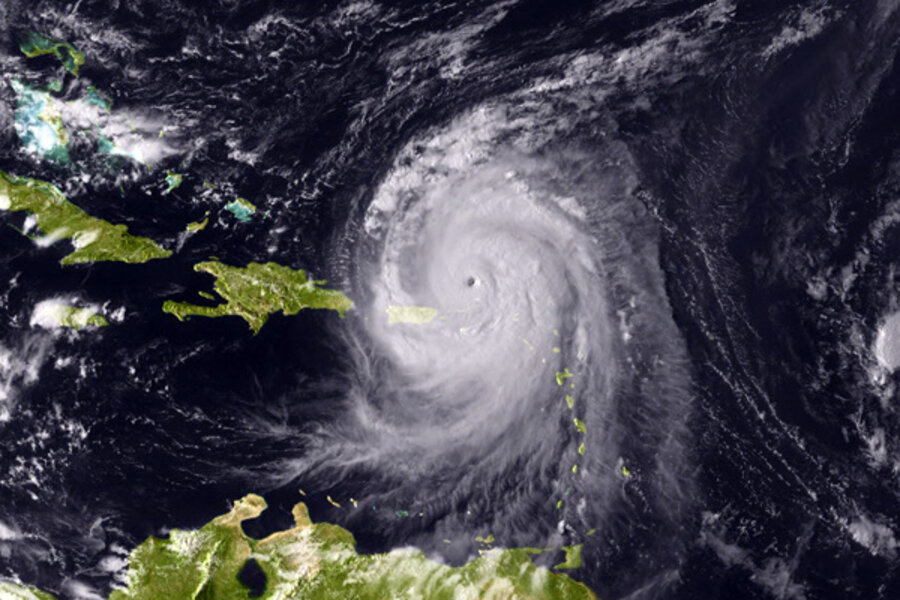Hurricane Earl: East Coast residents should have an evacuation plan
Loading...
| New York
As powerful hurricane Earl heads away from Puerto Rico and the Virgin Islands, federal officials are warning coastal residents from North Carolina to Maine to plan evacuation routes in case they need to seek safer ground.
Based on the expected storm track, Earl may stay just out to sea and parallel the coast. But a storm surge from the hurricane could cause significant damage to the coast as its winds have already hit 135 miles per hour.
Bill Read, the director of the National Hurricane Center, said Tuesday that he expects the first signs of the storm to come late Wednesday with big waves along the North Carolina coast. By Friday, Long Island and Cape Cod could see the big swells and dangerous rip currents.
“If it were my family, I would know what I was going to do and make that decision as the storm gets closer,” says Mr. Read.
The Federal Emergency Management Agency (FEMA) does not have the luxury of waiting until the last minute.
As a result, FEMA has started to move some of their employees to the states that will be affected, said Craig Fugate, FEMA administrator.
“We are making sure we get going early, we are not waiting for those storms to hit,” said Mr. Fugate, describing how the agency has changed its approach to the massive storms.
FEMA came under a great deal of criticism of being slow to react five years ago after hurricane Katrina battered New Orleans.
In addition, he says, FEMA is not waiting for governors to ask for assistance.
As officials wait for Earl, 200,000 residents of Puerto Rico are without electricity after the storm passed across the Caribbean. In addition, about 90 percent of the power in the US Virgin Islands has been shut down and the islands have been scattered with debris.
"The priority is to clear the roadways and power restoration,” says Tito Hernandez, a federal coordinating officer at FEMA.
Along the East Coast, most communities are still waiting to see what happens with the forecast before taking any action since the storm is arriving just before Labor Day, one of the biggest beach holidays of the summer.
“We’re just listening to the news like everyone else,” says Maria Fernandes, mayor of Sea Bright, N.J., which has not evacuated the ocean-side community since the nor’easter of 1992. “We’ve had a very good summer, all the weekends have been dry and we’re just hoping this last weekend will be dry, too.”
The fate of places like Sea Bright will depend on a low-pressure zone of cool, sinking air that is currently over the Midwest, where it is causing rain and thunderstorms. Currently, that system is stalled but it is expected to get some new energy, which will push it into the sweltering east. Computer projections show the low-pressure zone steering Earl out to sea.
“But, it’s going to be a close call,” says Carl Erickson, a meteorologist at AccuWeather.com in State College, Pa. “If the hurricane just wobbles a little more west, it could make landfall on the Outer Banks of North Carolina.”
Because the margin for error of where the storm will hit is so small, the Insurance Information Institute (III) recommends practicing an evacuation plan by doing a test run.
“Giving yourself just 10 minutes to pack up your family, pets, and important items and get out – possibly for good,” says Loretta Worters, a vice president of III, in an e-mail. “When a hurricane is approaching, advanced planning really matters."





